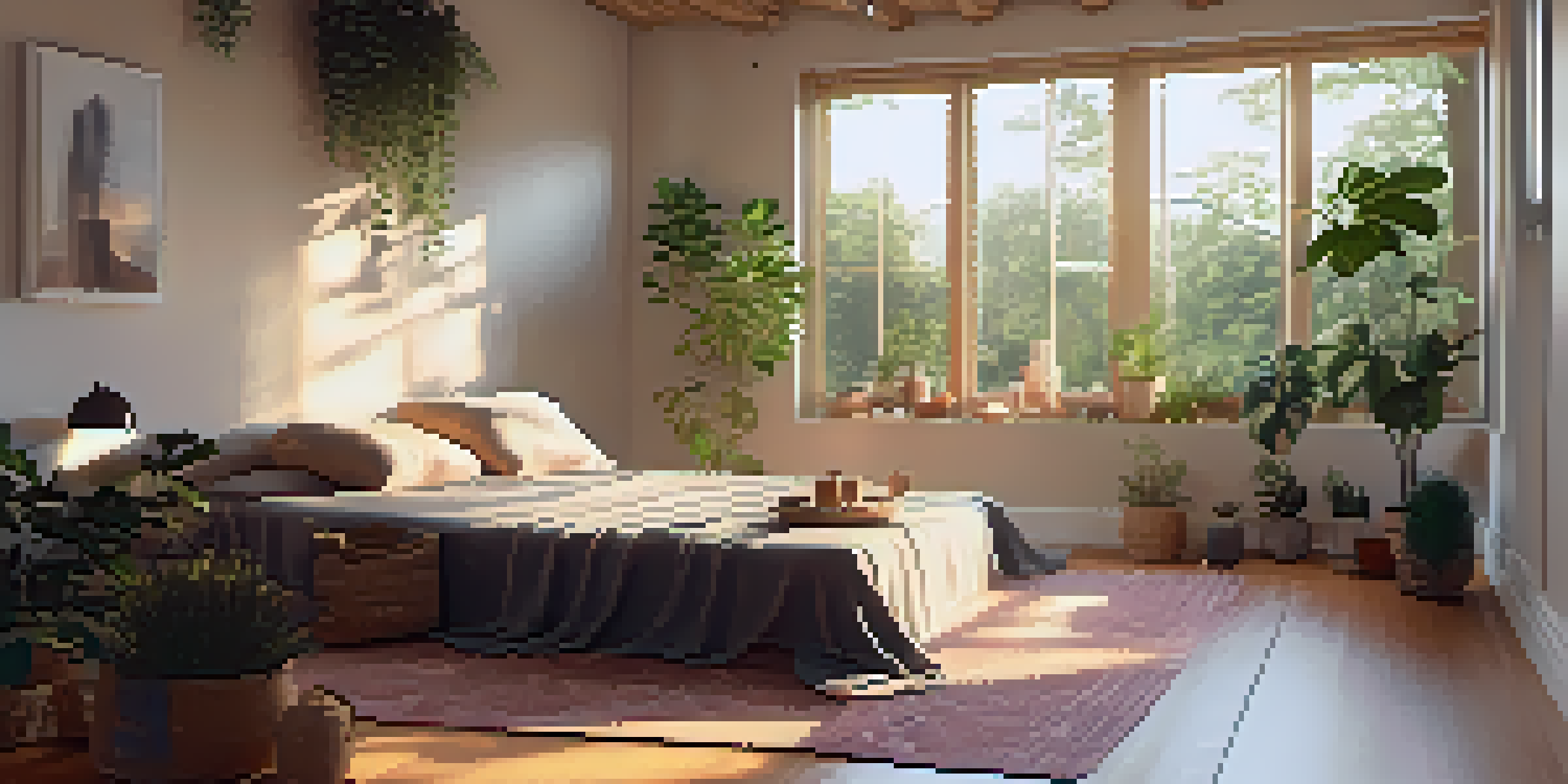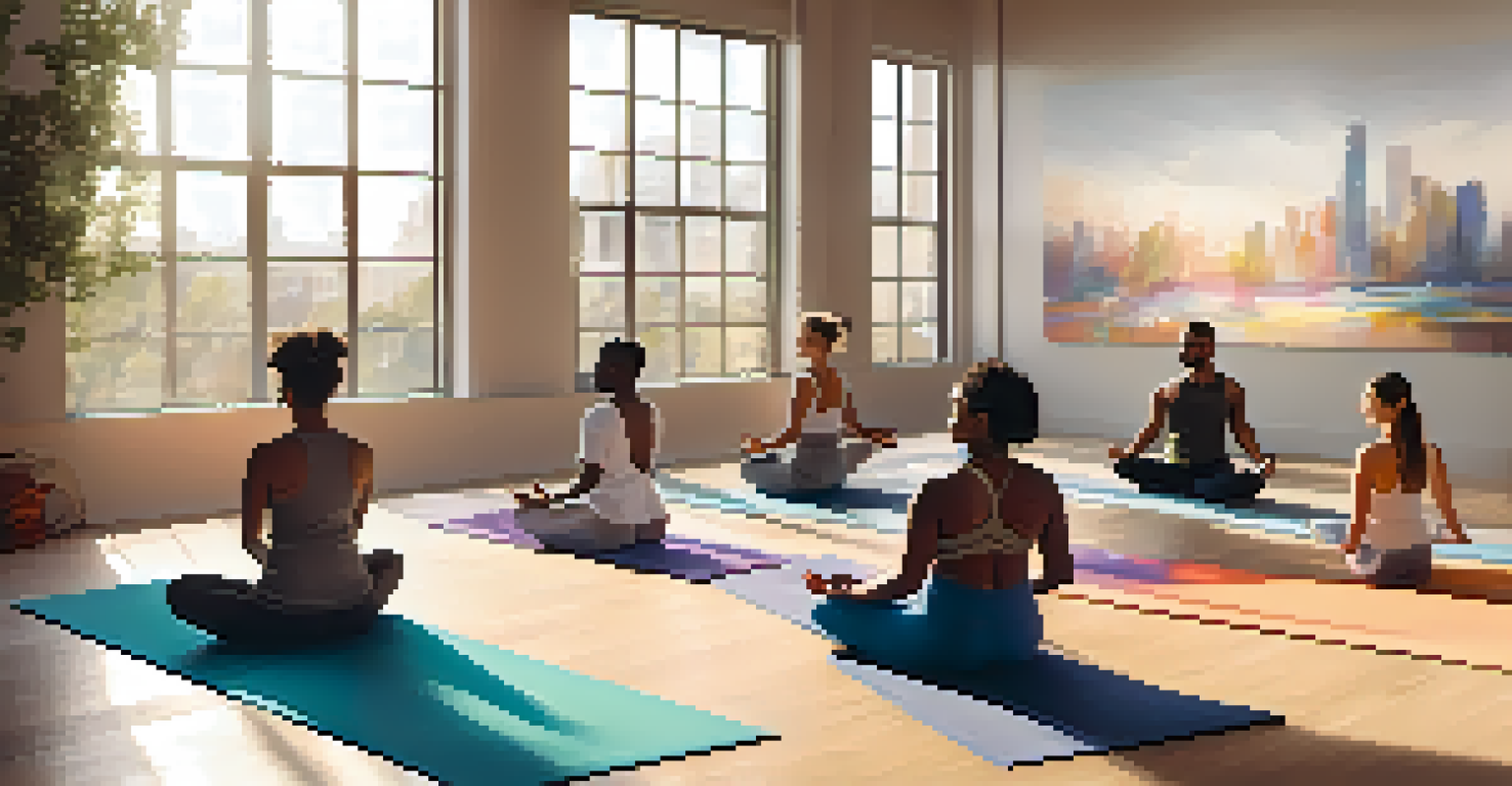Yoga Classes Focused on Seasonal Affective Disorder Relief

Understanding Seasonal Affective Disorder (SAD)
Seasonal Affective Disorder, commonly known as SAD, is a type of depression that occurs at specific times of the year, usually in winter. Many people experience symptoms like fatigue, irritability, and lack of motivation when daylight hours are shorter. It can feel overwhelming, but knowing you're not alone can be comforting during these challenging months.
In the middle of difficulty lies opportunity.
The root cause of SAD often links to the lack of sunlight, which can disrupt your body's internal clock and affect serotonin levels, a neurotransmitter that regulates mood. With fewer daylight hours, many people find themselves feeling low and lethargic. It’s essential to recognize these feelings and seek effective ways to cope.
Yoga has emerged as a powerful tool to combat these feelings. By incorporating specific practices into your routine, you can boost your mood and enhance your overall well-being, making the winter months more manageable. Let's explore how yoga can be tailored to provide relief from SAD.
The Connection Between Yoga and Mental Health
Research has shown a significant link between yoga practice and improved mental health outcomes. Engaging in yoga can reduce stress, anxiety, and depression, making it an excellent choice for those affected by SAD. The combination of physical movement, breathing exercises, and mindfulness creates a holistic approach to mental wellness.

During yoga, you focus on your breath and bodily sensations, which can help you become more aware of your feelings and thoughts. This mindfulness aspect allows you to step back from negative patterns and encourages a more positive mindset. It's like giving your mind a mini-vacation from the stresses of daily life.
SAD Affects Many in Winter Months
Seasonal Affective Disorder (SAD) is a form of depression that many people experience due to reduced sunlight during winter.
Additionally, the rhythmic nature of yoga can promote the release of endorphins, the body's natural mood lifters. By regularly practicing yoga, you can create a supportive environment for your mental health, helping to alleviate the symptoms of SAD over time.
Choosing the Right Yoga Style for SAD Relief
Not all yoga styles are created equal when it comes to combating SAD. Gentle and restorative yoga styles, such as Hatha, Yin, or Kundalini, are particularly beneficial for those seeking relief from depressive symptoms. These styles emphasize slow movements, deep stretches, and relaxation, making them ideal for creating a soothing practice.
Yoga is not about touching your toes, it’s about what you learn on the way down.
Conversely, more vigorous styles like Vinyasa or Power Yoga may be energizing but can sometimes be overwhelming for someone dealing with SAD. It’s crucial to listen to your body and choose a style that resonates with you, allowing you to feel both challenged and supported.
Ultimately, the best approach is to try different classes and see what suits you best. Many yoga studios offer trial classes, so you can explore various styles and find the one that helps you feel uplifted and grounded during the winter months.
Incorporating Sun Salutations into Your Practice
Sun Salutations, or Surya Namaskar, are a series of flowing movements that can energize your body and elevate your mood. This sequence not only warms up your muscles but also encourages a sense of connection to the sun, which is particularly uplifting during darker months. Think of it as a warm hug for your body that brings light into your practice.
Practicing Sun Salutations regularly can help combat feelings of lethargy associated with SAD. The combination of movement, breath, and intention helps to create a sense of rhythm and energy, almost like a mini celebration of the sun's presence, even on the cloudiest of days.
Yoga Boosts Mental Well-Being
Practicing yoga can significantly improve mental health by reducing stress, anxiety, and symptoms associated with SAD.
Try incorporating a few rounds of Sun Salutations at the beginning or end of your yoga practice. You'll likely find that this simple yet powerful sequence lifts your spirits and sets a positive tone for your day.
Breathwork Techniques to Alleviate Symptoms
Breathwork, or pranayama, is an essential component of yoga that can significantly impact your mental state. By focusing on your breath, you can activate the body's relaxation response, which can help reduce anxiety and improve mood. Incorporating breathwork into your routine can feel like a breath of fresh air during the darker months.
One effective technique is the '4-7-8' breath, where you inhale for four counts, hold for seven, and exhale for eight. This pattern encourages a calm mind and can help ease feelings of tension or sadness. Just a few minutes of focused breathing can shift your mood and bring clarity.
Experiment with different breathwork techniques during your yoga sessions. Find what feels right for you, and notice how it influences your emotional state. The beauty of yoga is that it provides various tools to help you navigate your feelings.
Creating a Cozy Yoga Space at Home
Having a dedicated, cozy space for your yoga practice at home can enhance your experience, especially during the colder months. Creating a warm and inviting atmosphere makes it easier to stick to your routine, even when the weather outside is uninviting. Think soft lighting, warm blankets, and perhaps even some calming scents from essential oils.
Consider setting aside a corner of your living room or bedroom as your yoga sanctuary. Personalize it with items that inspire you, such as candles, plants, or meaningful artwork. This space can serve as a refuge where you can unwind and focus on your well-being, even on the toughest days.
Create a Cozy Practice Space
Establishing a warm and inviting yoga space at home can enhance your commitment to practice, helping to manage SAD symptoms.
By making your practice space inviting, you’ll be more likely to engage in yoga regularly. This commitment can play a crucial role in managing SAD symptoms and fostering a more positive mindset throughout the season.
Joining Community Yoga Classes for Support
Participating in community yoga classes can provide an added layer of support while navigating SAD. Being surrounded by others who share similar experiences helps foster a sense of belonging and connection, which can be incredibly uplifting. It's like having a supportive tribe to cheer you on during the winter months.
Community classes often emphasize inclusivity and shared experiences, which can make the practice feel more enriching. Many studios offer classes specifically designed for mental health, allowing you to connect with instructors and fellow practitioners who understand what you're going through.

If in-person classes aren't feasible, consider online options. Virtual yoga communities can also provide encouragement and motivation, helping you feel less isolated while still reaping the benefits of yoga practice.